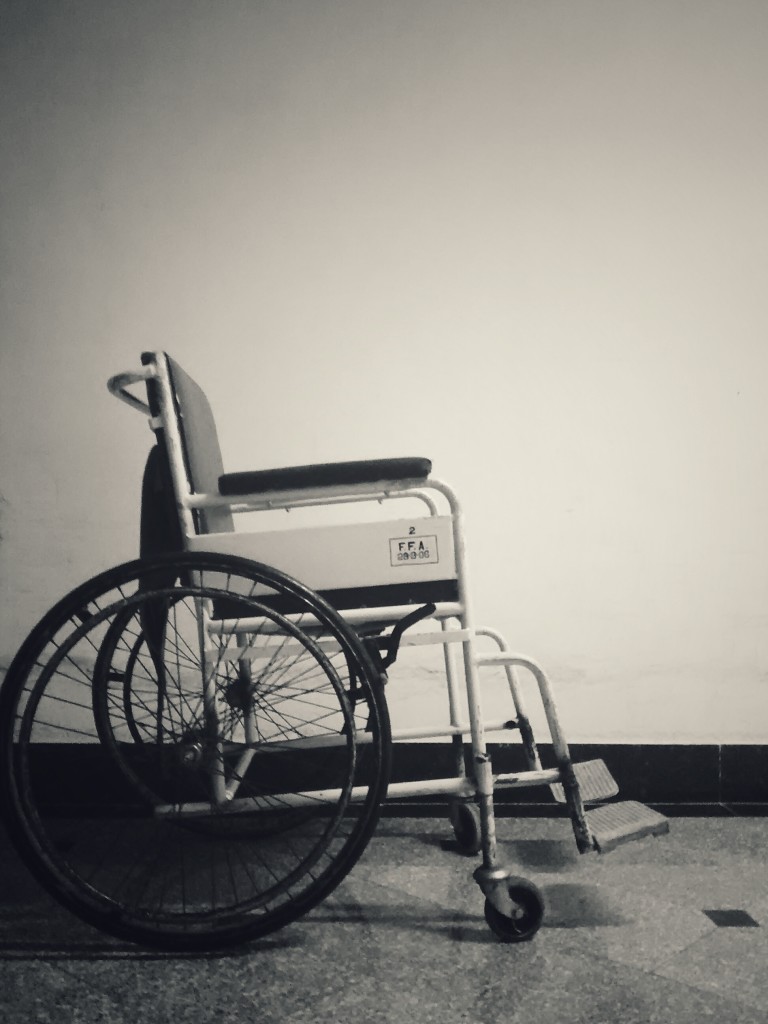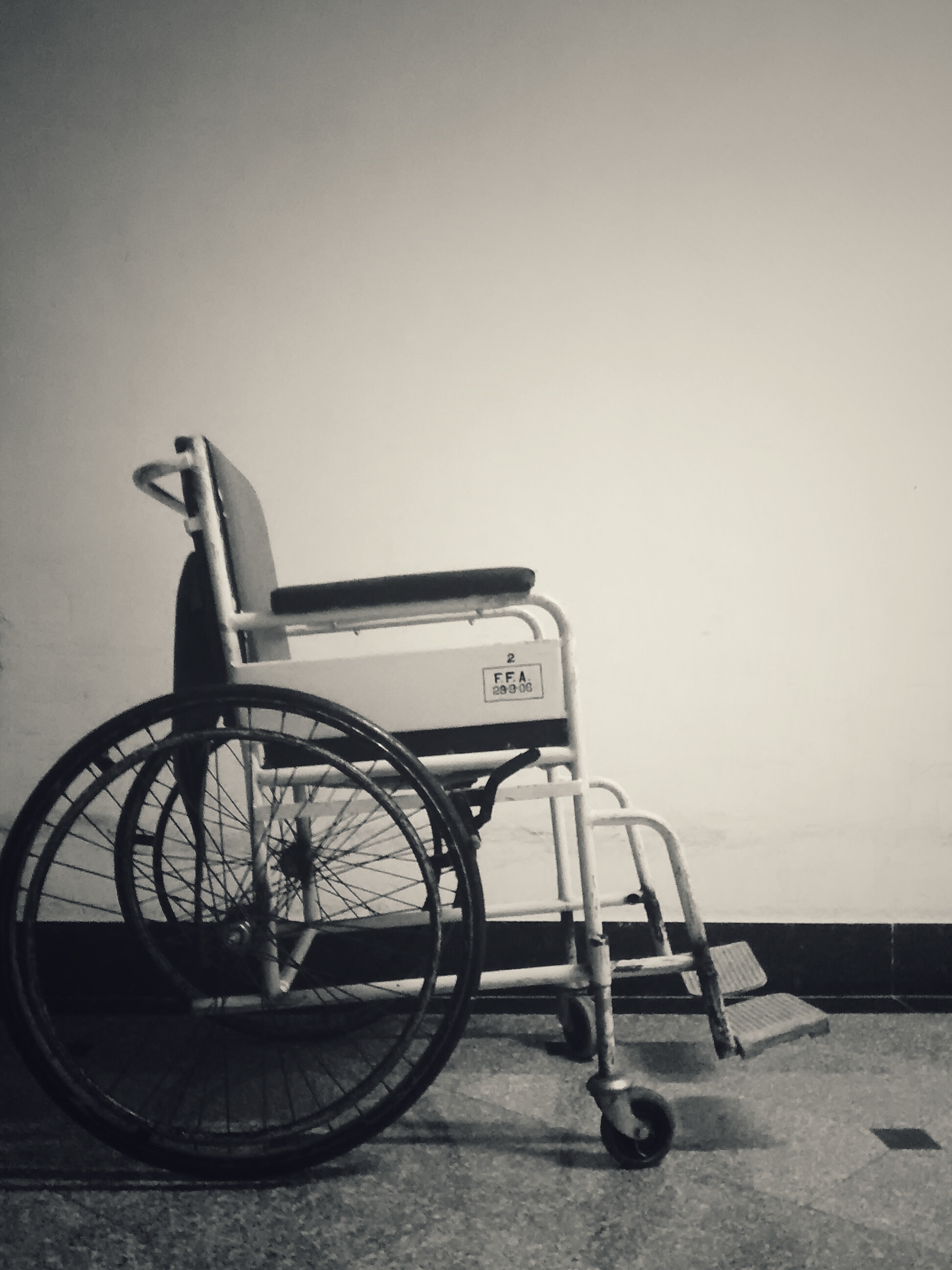
The image – a background of sorts is called for, considering it’s not something most people photograph, not even me who’s prone to photograph anything that catches my eye. So let’s begin with that background, shall we? And then I’ll go on to just how to go about doing what the title of this post says.
It’s been eleven days now since my mother’s been in the hospital. It started off with an infection of the alimentary canal. Not serious in itself, not until she stopped eating entirely and ended up getting incredibly weak. So the hospital it was, where apart from the much-needed drips to keep her hydrated and nourished, the doctors also decided a gastroscopy was called for, considering she stated she had trouble swallowing at times. Things be as they may, the procedure went off well, and thankfully didn’t show up anything that needed treatment. As things stand as of now, she’s on the mend, eating a bit, and should be back home hopefully later today.
I’ve been in the hospital all these days, or at least a majority of each – Being There, literally. Doing what needs to be done when it needs to be done. And when there’s nothing to do, I’m still there, the mind is still in the here and now, which is where the Seeing comes from. I see this some two days back and make a photo of it. On the humble MotoG, what else? And since it’s an image that’s all about Form, I choose to post-process it in black-and-white. That’s the background behind this shot, and therein lies the tale…
Browsing through the shots on my phone while heading home from the hospital a few days back, I lingered a while on this one. And as you should know by now, this image is all about Form, Lines and Shapes essentially. And then a thought struck me, which got me excited no end.
We know the problem with labeling things – that once we do so, it prevents us from seeing it as anything else but that. And that doing so makes it an ordinary everyday object, unworthy of further investigation. But what if we turned that problem over on its head? What if we used that label as a tool to further our task of exploring it? What if we used it as a starting point to further what I refer to as “the innate curiosity and fascination with the world at large” that is so natural to children? What if we use the label as a starting point to – as they all say, but nobody explains how – “Slow down” and really explore things? Is it possible to use the act of labeling – which is part of the problem why we don’t see things – to further our quest of Seeing, and begin to make photographs of anything?
A few hours of thought on this have led me to believe that yes, we can!
As I said it began with this image. Not in making it, but in viewing it. Because when I viewed it, I went “Wheelchair” in my head. That’s a label, right?
Remember what Ansel Adams said? “You don’t make a photograph just with a camera. You bring to the act of photography all the pictures you have seen, the books you have read, the music you have heard, the people you have loved.”
Essentially what he meant was that we bring to the making of a photograph the sum total of the experience of our lives.
What if we bring to a label the sum total of the experience of our lives? With the purpose of analyzing it so as to better help us in our task of looking at things anew? How do we do it? This is how: I call it the top-downbottom-up approach. It’s a process of going from the whole to the parts – constantly breaking things down until we reach a fundamental – while at the the same time going from the parts to the whole, seeing the connections and the interrelations of things.
Once something catches our eye and we’ve made the initial shot of it (as I did), let’s say we label it as “Wheelchair” . We then pause and ask ourselves what that label consists of. In this case, it consists of “wheel” , and “chair” .
What do we know about wheels? Firstly, in terms of form, they’re essentially circles. That should give us a clue about how we use them in composition. What more do we know about wheels? Well, they have a hub around which the wheel rotates. Wheels usually have spokes, and in terms of Form, spokes are lines that radiate from the hub to the circumference of the wheel.
In less than a minute’s reflection, we’ve already determined that the wheels of that wheelchair are worthy of inspection; specifically, we need to be looking at that wheel in greater detail. We know that the hub can throw up interesting possibilities, as can the spokes. And that’s without even casting a second look at the wheel – who knows what else we’ll discover when we actually go looking at it.
Let’s now bring our attention to the label “Chair” . We ask ourselves what a chair is, and we say it’s something to sit on. We think a bit more about this and we realize that a chair essentially consists of a horizontal surface and a vertical surface (without the vertical, it’d be a bench). Viewed from the side, a chair is essentially a horizontal and a vertical line (as we can see in the photograph). Viewed from another angle, a chair can be viewed as shapes. Shapes can contain textures, maybe that seat of the chair and the backrest can throw up interesting details if we explore it, hmm? I’ll do that in a minute, but let me look again at that chair from the point of view I am currently, and what do I see? Yes, it does consist of a horizontal and vertical line, but they’re slightly tilted… Ah, it’s so that the person who sits in it can recline back just a tad bit — comfort factor, it’s a wheelchair, and wheelchairs are for people who need to be wheeled around as they may not be in a position to walk themselves (note here that in a ash I’ve gone from top-down to bottom-up), so maybe I need to investigate the comfort factor.
I used this analysis as a starting point the next day for really looking at the wheelchair in greater detail. Unfortunately, the light was horrible what with the rains yesterday, not at all lending itself for photography. But the discoveries were amazing.
I discovered that the wheel had another wheel – one which the patient could use to wheel themselves around. And then I went “jeez, I’ve always known this yet taken it so for granted!” . And in moving around while looking at those two concentric circles, I discovered just how beautiful they looked. In looking at the wheel, I discovered the texture of its rubber tyre. In looking at the wheel I discovered a handbrake. In looking at the seat and backrest I discovered cracks in the leather… all of these things were worthy of being photographed. Of course, in analyzing them from a visual viewpoint, we think in terms of our ingredients of visual design; in making an image of them, we never forget that one key cardinal rule from my Art Of Seeing Workshop.
When I really sit back and think about this methodology, I realize that I’ve been subconsciously using it for several years in the specic domain of my travel photography. Formalizing it as a method I guess has its share of risks – the ability to switch between left-brain and right-brain is key here. But yes, it does give us an incredibly powerful way of exploring things, of slowing down, of discovering things anew, of looking at things we’d never have given a second look at.
Give it a whirl if you will. You can use it for photographing anything, I’d think. Pick a Label. Any Label. Let the games begin!
